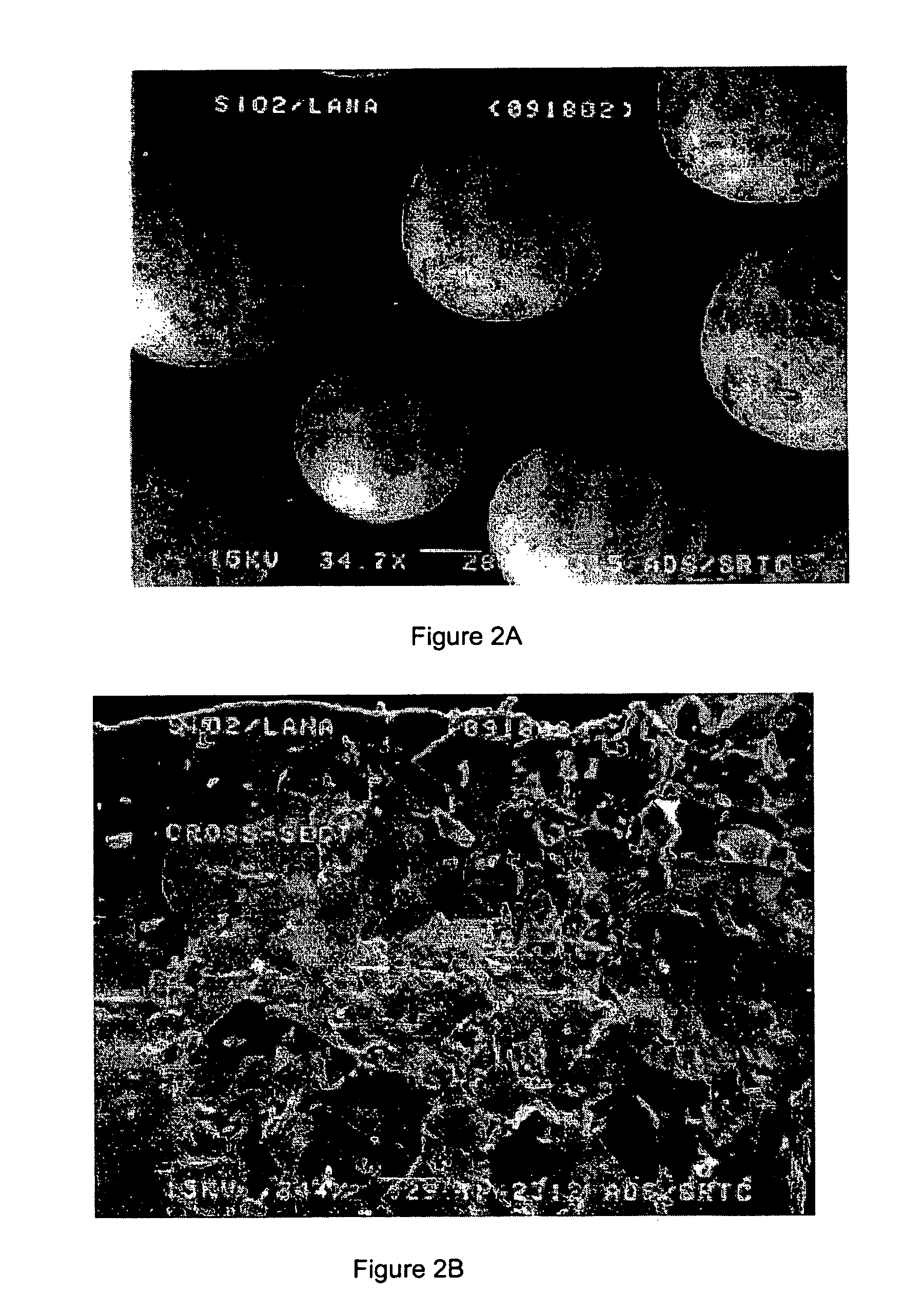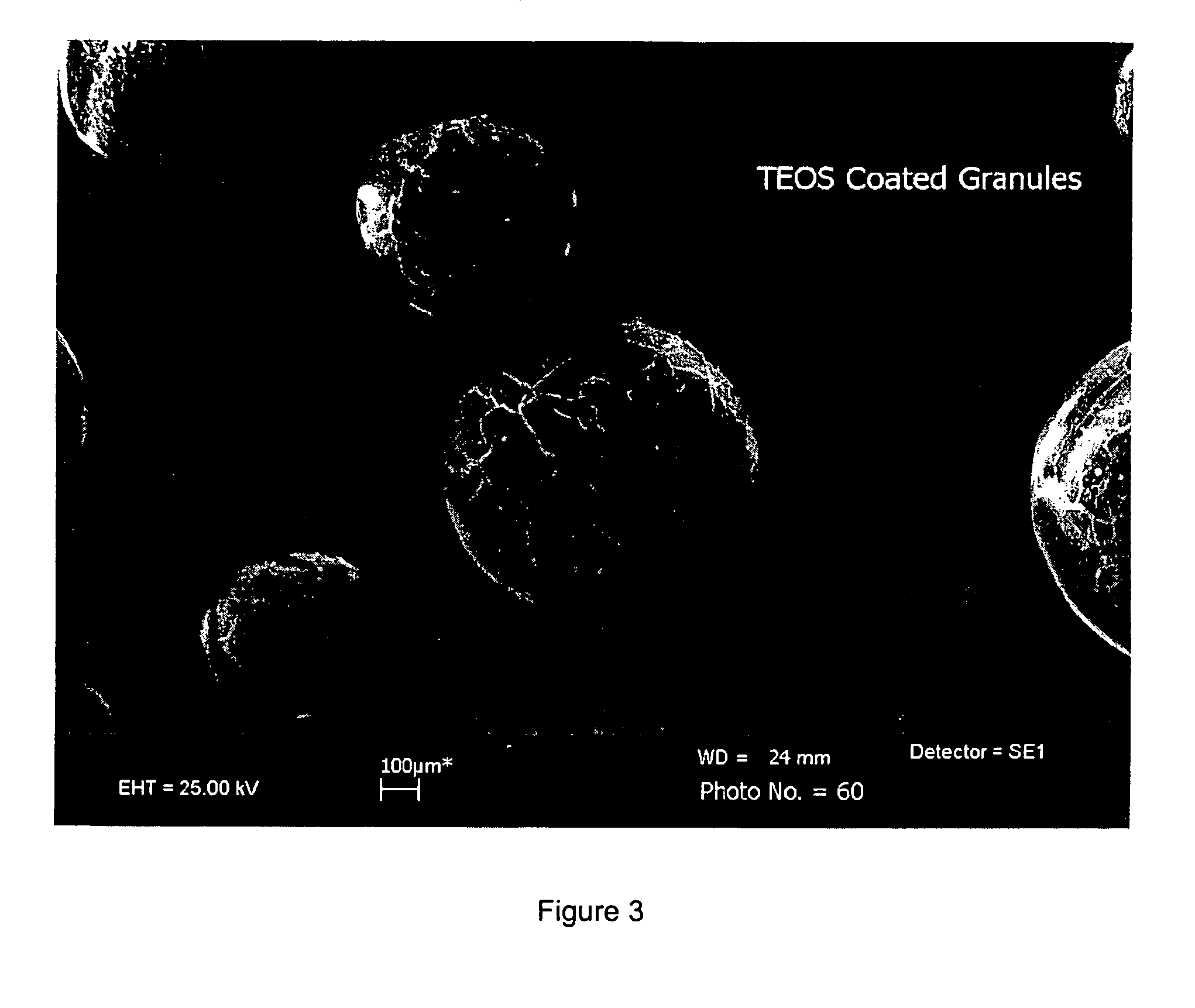Process of forming a sol-gel/metal hydride composite
a metal hydride and composite technology, applied in the field of metal alloy composites, can solve the problems of filter failure, limited utility for large-scale use, and reduce the efficiency of filtering, and achieve the effect of adequate handling strength
- Summary
- Abstract
- Description
- Claims
- Application Information
AI Technical Summary
Problems solved by technology
Method used
Image
Examples
example 1
[0031]Metal Hydride. The metal hydride used in the current example is a commercially available lanthanum-nickel-aluminum alloy (LANA0.75). The selected alloy is readily available and has been well characterized in a number of studies. However, it is expected that other metal hydride materials may be substituted with similar results.
[0032]Preferably, the metal hydride is in the form of a fine particulate having an average size of less than about 40 microns and more preferably a size of less than about 20 microns and still more preferably having a size of less than about 5 microns. There are a variety of ball milling and particulation processes that may be used to generate the desired particle size of a metal hydride. For the purposes of this study, metal hydride particles formed by the decrepitation of metal hydrides following multiple hydrogen absorption / desorption cycles were used. The decrepitated particles were surface oxidized and screened to select particles of 20 microns or le...
PUM
| Property | Measurement | Unit |
|---|---|---|
| particulate size | aaaaa | aaaaa |
| particle size | aaaaa | aaaaa |
| wt % | aaaaa | aaaaa |
Abstract
Description
Claims
Application Information
 Login to View More
Login to View More - R&D
- Intellectual Property
- Life Sciences
- Materials
- Tech Scout
- Unparalleled Data Quality
- Higher Quality Content
- 60% Fewer Hallucinations
Browse by: Latest US Patents, China's latest patents, Technical Efficacy Thesaurus, Application Domain, Technology Topic, Popular Technical Reports.
© 2025 PatSnap. All rights reserved.Legal|Privacy policy|Modern Slavery Act Transparency Statement|Sitemap|About US| Contact US: help@patsnap.com



